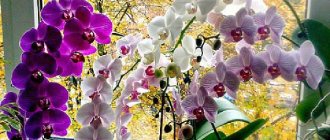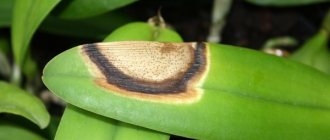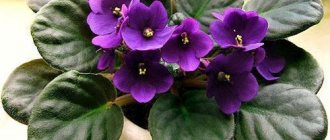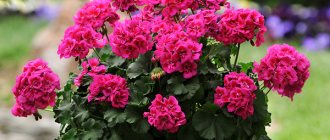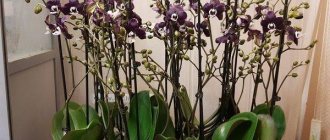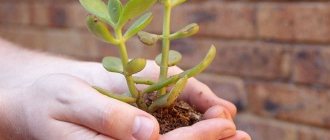Author: Natalya Category: Houseplants Published: February 17, 2019Republished: February 17, 2019Last edits: January 11, 2021
- Growing from seeds
- The gardenia's buds are falling off
Gardenia is one of the most beautiful flowering plants in indoor culture. And, perhaps, one of the most capricious. Gardenia has won love and recognition in many countries. For the Japanese it symbolizes secret passion, for the Chinese it symbolizes femininity, grace and aristocratic fragility. Lovers of indoor plants are delighted by the beauty of gardenia flowers and leaves and its delicate, pleasant aroma. However, caring for this plant is not easy.
- How to plant and replant gardenia?
- What conditions does it need for normal development and abundant flowering?
- What kind of care will she need?
You will learn about this and much more from our article.
Planting and caring for gardenia
- Flowering: from July to October.
- Lighting: bright diffused light (placed on eastern and western window sills, shading will be required on southern windows in the afternoon).
- Temperature: from 16 to 24 ˚C.
- Watering: during the period of active growth - as the top layer of soil dries, in winter - with a delay of 2-3 days.
- Humidity: high, especially during budding.
- Feeding: young gardenias - 2 times a month alternately with mineral and organic fertilizers in liquid form, adults - every week, but the fertilizers should not contain calcium.
- Dormant period: February-March.
- Transplantation: in early spring or after flowering: young gardenias are replanted annually, adults - once every 3 years.
- Reproduction: seed and vegetative (cuttings).
- Pests: white aphids, spider mites, scale insects, mealybugs and thrips.
- Diseases: sooty fungus, chlorosis.
Read more about growing gardenia below.
Gardenia (lat. Gardenia) is a genus of the Rubiaceae family from the tropics, which is named after the American physician and naturalist Alexander Garden. In indoor conditions, the gardenia flower does not take up much space, but in nature - in East and Southeast Asia, as well as in South Africa - the gardenia plant sometimes reaches two meters in height. Gardenia, grown at home - jasmine, sometimes called "Japanese beauty" by gardeners; it came to England in 1760.
Flower growers grow it not only for the beautiful white, waxy flowers that emit a subtle jasmine scent, but also for the glossy leaves of a rich dark green color, which are a worthy decoration for gardenia when it is not in bloom.
- Reproduction and cultivation of sansevieria
If something went wrong
The main thing during this difficult period is not to overdo it with watering, this will have a detrimental effect on the general condition. But if the acclimatization process is delayed, the plant cannot recover; it is best to place the gardenia in greenhouse conditions . Spray regularly, but do not feed while the flower is sick.
Of course, each flower has its own natural growing environment. Gardenia is also no exception. It is in it that the plant feels great, grows quickly and blooms actively. At home, it is necessary to recreate an atmosphere similar to natural. And you will see how grateful the plant is to you for this.
Features of cultivation
Gardenia jasminoides is an evergreen bush that grows in a room up to 45-50 cm in height. Its shoots are sometimes bare, sometimes pubescent; the leaves are dark green, bright, shiny, as if opened with varnish, short-petiolate, about 10 cm in length, broadly lanceolate or obovate, entire, tapering towards the base. Gardenia blooms in summer with fragrant single or few-flowered (4-6 pieces) corymbose inflorescences, axillary or apical. At the beginning of flowering, the flowers are boiling white, but gradually turn yellow. The diameter of the flowers reaches 8 cm, and varieties with double flowers are most often grown in cultivation. Caring for gardenia at home is not as simple as, for example, pelargonium, but the result is worth the effort.
So, what are the features of home gardenia:
- gardenia does not tolerate dry soil or stagnant water;
- gardenia is very demanding on air humidity, so be prepared for frequent daily spraying;
- For gardenia, soil acidity is of great importance, so conduct a soil test for this indicator before planting the plant and ensure that the pH is no more than 5.5;
- the air temperature should not be higher than 24 ºC and lower than 16 ºC if you are interested in the quality of gardenia flowering;
- Remove spent buds immediately.
Preparing for transplant
At the point of sale, plants are kept in small containers. For gardenia to develop well, it requires a certain soil composition and a larger container. After purchasing, the flower should be transplanted into another container. It is better to do this in the spring. If work needs to be done earlier, you must wait at least two weeks.
Before the procedure, water the gardenia thoroughly so that the roots are not damaged when taken out of the pot. You need to choose the right container. For a small plant, a simple plastic cup will do. When the roots completely fill it, you should transplant the bush into a larger container.
Transplantation process
The gardenia is carefully removed from the container and placed in a larger pot. The soil is not completely removed from the roots. A special drainage is placed at the bottom of the container. You can use pebbles, expanded clay or other material. Then the soil is poured in and watered. The roots must be carefully examined and dried elements removed. If there are rotten parts, they are also removed. Gardenia roots need to be kept in a solution of potassium permanganate. Place the plant with soil in the pot, level it, and water it again.
In flower shops you can purchase a ready-made composition that is suitable for the flower. At home, it’s easy to make the desired mixture yourself.
If you brought a bush with white buds from the store, then the replanting process should be postponed. You should wait until the flowering process is complete.
Replanting is also performed if you need to completely change the soil or check the condition of the root system. The procedure begins after flowering, when the gardenia is in the dormant phase. It is carried out more often in autumn or early winter.
Water the gardenia with settled water at room temperature. After transplantation, the leaves of the bush may wither. This phenomenon is considered normal for gardenia. If favorable conditions are created, then after a week the flower will come to life. Replanting a tropical plant is stressful, so it is worth providing it with peace after this procedure.
Caring for your home gardenia
Rules of care
Find a bright, warm place in the apartment, protected from drafts, for the gardenia - the lighting should be bright, but diffused; the temperature was mentioned above - from 16 to 24 degrees. Eastern or western window sills are most suitable for the flower; northern ones are excluded, and placement on a southern window sill will require shading from the sun's rays from 11:00 to 17:00.
In winter, you will have to supplement the gardenia with fluorescent lamps, since the winter daylight hours are too short for it. But even if the place for the gardenia is chosen well and you care for it correctly, it can take a very long time to settle down, get used to it, become capricious and even drop its buds.
Watering
One of the most important points in how to care for gardenia at home is watering the plant. Gardenia requires frequent watering, especially during the period of active growth - in spring and summer, as the top layer of soil dries. In autumn and winter, water less abundantly and often, waiting until 2-3 days have passed since the evaporation of moisture from the soil surface. Once a month, water the gardenia with acidified water, and the rest of the time, water it with soft water - boiled or filtered. And be sure to be warm: the temperature of the soil in the pot should be the same as the air in the room.
Air humidity, especially during budding, should be high, so place the flower in a tray with damp moss, expanded clay or pebbles, but in such a way that the bottom of the pot does not touch the water. Spray frequently with warm water, but only until the buds begin to open: when water gets on the flower, brown spots form on it. Instead of spraying, wipe the gardenia leaves with a damp sponge. Do not move or turn the flowerpot, otherwise the plant will drop its buds in a panic.
Fertilizer
Young gardenias need to be fed twice a month with mineral and organic fertilizers alternately. For an adult plant - weekly throughout the growing season, excluding fertilizers containing calcium. It is preferable to use a liquid form of mineral fertilizers (Vito, for example) in accordance with the attached instructions.
- Photo of red and white anthurium
Gardenia benefits from peat-humic fertilizer; liquid potassium fertilizer for flowering indoor plants does not cause any complaints, but the dose must be halved than recommended by manufacturers. To normalize the pH, iron-containing preparations are added twice during the growing season. In winter, gardenia does not need fertilizing.
Transfer
The soil for gardenia should consist of equal parts of sand, turf, coniferous, peat and leaf soil. A decent drainage layer is required. We have already talked about acidity. If for some reason you cannot make the soil mixture yourself, buy soil for azaleas at the store. Gardenias are replanted in early spring or after flowering, and only if absolutely necessary. For young plants, this need exists once a year, for adults – once every three years. If you do everything right.
It is not advisable to replant a newly purchased gardenia right away; wait a couple of weeks. If you bought the plant in bloom, wait until the flowering process is complete before replanting the gardenia. In order not to cause unnecessary inconvenience to the capricious flower, transfer it to a new pot with drainage and add the required amount of soil to the pot.
Transplanting into a new pot
To replant a gardenia, you need to be consistent and careful. It is important not to damage the root system of the plant. First of all, you need to choose a suitable pot. If you have just brought a plant from the store, you should not select a huge pot for it - a container 2-3 cm larger in diameter than the store pot is enough.
To properly transplant, carefully remove the bush from the old pot along with the earthen ball. Try to remove the old soil from the roots (without fanaticism), and then place the plant in a solution with a biostimulator.
- At the bottom of the new pot, you need to place steam-sterilized drainage (expanded clay or sphagnum), then pour a layer of clean river sand, then coal, and only at the end - soil. There should be more of the last layer than any other, this is understandable.
- Remove the gardenia from the biostimulator, straighten the roots a little, and place in a new pot. Lightly sprinkle soil on top, pressing down the soil a little as you pour it.
- After the bush is in place, water the soil on top with the biological solution in which it was soaked. Then the pot must be placed in a warm, sunny place, but protected from direct rays.
Watch a video about transplanting gardenia:
Gardenia propagation
Growing from seeds
Growing gardenia from seeds is not the best way to propagate the plant. Only freshly collected seeds are suitable for propagation, since they quickly lose their viability. Before planting in soil for azaleas, the seeds must be soaked for 2-3 hours in Zircon or aloe juice - stimulants, then sow the seeds on the soil and sprinkle the same mixture on top through a sieve with a layer of 0.5 cm, carefully water, cover the container with the seeds with film or glass and keep warm, ventilating from time to time for 1-2 hours. Shoots will appear no earlier than in a month. If seedlings appear in autumn-winter, they will have to be artificially supplemented with light.
Gardenia cuttings
When the gardenia has finished blooming, it is usually cut back to two-thirds the length of the shoots, removing weak shoots and thinning if the bush has become too dense. During the growth period, from time to time you also have to pinch one shoot or another, stimulating tillering. These cuttings are the material for propagating gardenia - apical and semi-lignified. The length of the shoot should be about 10 cm. The substrate for cuttings is a 1:1 mixture of river sand and peat. Keep the cuttings in a pale pink solution of potassium permanganate for half an hour, plant them in the ground and cover with glass or film to ensure a greenhouse effect.
The temperature should be 25 ºC, it is necessary to regularly ventilate the cuttings and moisten the soil. You can speed up root formation by arranging bottom heating for the cuttings. Once the cuttings have taken root, they are transplanted into azalea or mature gardenia potting soil, and when they reach a height of 15 cm, they are pinched to encourage the appearance of side shoots. When the side shoots grow 10-12 cm in height, they are also pinched. When the young gardenia becomes a bush, it is transferred to a larger pot.
Growing gardenia from seeds
Gardenia seeds photo
Large gardenia seeds can be easily planted one at a time in separate cups, so as not to have to pick them later. But many gardeners prefer to sow in a common container in order to take up less space in the first month of growing. Everyone chooses what is more convenient for them.
- Planting depth is 1 cm, the distance between seedlings is 2-3 cm.
- The sown seeds are sprayed with a spray bottle and covered with film.
- In such a mini greenhouse, the plants will sprout within three weeks.
- Maintenance consists of maintaining constant soil moisture (there must be drainage to prevent stagnation of water) and regular ventilation of the greenhouse.
Gardenia from seeds photo seedlings
- If sowing was carried out in a common container, at the stage of 3-4 true leaves, the plants are planted in separate containers, pinching off the central root, and still covered with bags or transparent jars.
- 7-10 days after transplantation, fertilizing is carried out with a complex preparation for azaleas.
When the seedlings grow up, they are gradually accustomed to open space by removing the cover.
Diseases and their treatment
The gardenia's buds are falling off
Sometimes this problem begins at the moment of bud formation: the temperature regime has been disturbed. Strictly ensure that the temperature stays between 20-18 ºC during the day and 18-16 ºC at night. If the temperature is too high at night, buds may not form at all. And no sudden changes! Watering gardenias should be regular. Insufficient air humidity or improper lighting, drafts, moving a flowerpot with a flower from place to place - any violation of the rules for caring for gardenia can lead to the plant losing buds. Therefore, be vigilant and disciplined.
- Houseplant zamia (photo)
Gardenia turns black
The simplest explanation for why gardenia leaves turn black is that it is not watered correctly. Either the soil is too dry, or it has been too wet for a long time - this is why the leaves of the gardenia turn black and fall off. Pere
When is a transplant required?
It is mandatory to replant gardenias brought from the store, since transport soil cannot serve as a source of adequate nutrition for the plant for a long time. Emergency transplantation is carried out when the flower is affected by diseases or pests.
As for planned transplants, young gardenias are moved to a new container annually for the first three years. At this time, the active formation of the root system is underway. After three years, transplants are carried out as the bush grows.
Why doesn't gardenia bloom?
There may be several reasons for the lack of flowers on this indoor plant:
- Wrong soil. Gardenia requires soil with an acidic environment. Ideal for it would be special soil for gardenias, lemons or roses.
- The soil is over-acidified. It is useful to acidify the soil for gardenia, but in no case should you overdo it. Acidify the soil no more than once a month, and for acidification 2-3 drops of lemon per 1 liter will be enough. water.
- Watering gardenia with hard water. The plant does not tolerate such water; it can even destroy the gardenia. It is necessary to soften the water for irrigation with a special softener or vinegar (1 teaspoon of vinegar per 2.5 liters of water).
Gardenia jasminoides is a rather capricious plant. But still, growing it is not particularly difficult, you just need to follow all the care recommendations and in gratitude the oriental beauty will give you the most beautiful flowers.
Watch also the video on how to properly replant gardenia at home:
How to care for it afterwards?
After the procedure, the plant should be placed in a place with moderate lighting and the room temperature should be maintained at +23 +25 degrees. In spring, gardenia can be placed on the balcony or simply ventilated by opening the windows. The main thing is to avoid drafts.
After transplantation, you should not water heavily; the plant should recover within two weeks. Further care consists of regular watering as the soil dries out, fertilizing before the flowering period begins, and humidifying the air (you can find out more about when and how long gardenia blooms and what to do if there are no buds here).
Indoor varieties
The Gardenia genus includes 134 species, but mainly gardenia jasmine is bred for decorating living spaces.
Gardenia jasminoides or Cape jasmine (Gardenia jasminoides)
A tree-like shrub with smooth shoots grows up to 1.8 m in height. Gardenia is easily recognized by its large snow-white flowers (up to 7 cm in diameter). Flowers are located on woody shoots in inflorescences or single terry cups. Jasmine gardenia, which is cultivated for decorative purposes, blooms longer than the wild plant.
A characteristic difficulty in growing a tropical flower is its capriciousness to microclimate conditions. Gardenia does not tolerate fluctuations in temperature, lighting and air humidity; it reacts painfully to them by fading, dropping flowers and blackening of leaves.
In winter, when daylight hours are significantly reduced, the shrubs are provided with additional lighting. In the summer, gardenia, on the contrary, is darkened. The natural habitat of the species is the forests of China and Japan.
Gardenia profusely (Gardenia Florida)
The variety is attractive with fragrant flowers, resembling camellia in appearance. In terms of beauty and richness of aroma, the white gardenia bush can compete with the rose bush - it is often used to decorate rooms.
Gardenia radicans
A dwarf variety of gardenia, very popular among gardeners. A small bush with a rounded crown reaches a maximum of 60 cm in height. It can be used for growing bonsai. Fragrant large flowers please the eye for a long time, subject to proper watering and feeding.
Adaptation of the plant after purchase
Like other whimsical plants, gardenia, after changing its “place of residence”, needs quarantine and a period of adaptation. Quarantine is observed so as not to infect other indoor flowers with pests, if any previously existed. The adaptation period in a new place is from 15 to 20 days. Only after this period can the flower be transplanted into a permanent pot.
In the store, the plant is in soil containing few useful substances (it is intended only for transportation), so it is necessary to replant the flower, even if you have to sacrifice the buds.
What to do when flowering is over?
After the buds have fallen, the shoots are cut to half, damaged and dried parts are removed, and their tops are pinched to stimulate the growth of young side shoots.
To form a crown of the required height, the growing point of the plant is pinched.
Top dressing
Mineral or organic fertilizers are added to the soil 1-2 times a week. For adult plants, select a fertilizer that does not contain calcium. If the leaves turn yellow, add a solution of iron sulfate to the soil.
When buds form, you should rid the soil of excess acidity; to do this, use fertilizers that contain iron.
The favorable time to start adding fertilizer to a pot with a young plant is determined by the degree of development of the root system: if the roots have filled the entire pot and quickly absorb moisture, it’s time to apply fertilizers, alternating organic with mineral ones.
Bloom
How and when does it bloom?
Gardenia usually blooms from May to August, but sometimes flowering can last for six months. The duration depends on the size of the flower and the number of buds set. They open up one after another. It happens that by the beginning of winter, gardenia begins to bloom again.
Why doesn't it bloom? There may be several reasons why a plant does not bloom:
- The soil has insufficient acidity.
- When watering, hard water is used.
- Temperature difference.
- Insufficient lighting.
- Insufficiently humid air.
- Lack or excess of minerals.
What should I do to make the plant start to bloom?
- The most important thing is to provide the flower with suitable conditions. This is constant lighting, except at night. If, on the contrary, the flower is exposed to direct sunlight, you need to shade it. When there is not enough light, ordinary fluorescent lamps are used.
- Monitor the temperature. The soil temperature should be the same as the air temperature. If the temperature is too low, the plant will not bloom.
- Control soil moisture and carry out timely watering.
- You can arrange a “steam bath” for the flower to stimulate the growth of buds. To do this, place the pot in the bathroom, fill the bath with hot water and leave the flower in this atmosphere for 2-3 hours. You can carry out the procedure weekly until the buds bloom.
How to trim and shape the crown?
Gardenia shoots need to be trimmed regularly. First, already faded inflorescences, damaged or weak shoots are pruned, then healthy shoots are pruned. Gardenia should be pruned in the fall, after the plant has flowered. Half weak or diseased shoots are removed. In the spring, during the growing season, young shoots of the flower are pinched. This is necessary so that the flower is more magnificent.
The cut parts can be used as planting material when propagating the plant.
If you want the flower to have a lush, spherical crown, then for this you will need:
- Tie the gardenia to some kind of vertical support.
- Remove side shoots.
- When the required height is reached, the growing point is pinched and the leaves are removed from the trunk.
Aftercare
In the first months, young plants need close attention and care . Gardenia should be removed from the greenhouse gradually, increasing the ventilation time by 1-2 hours every day. Water the plants with warm and soft water. At the first signs of chlorosis, treat the plants with iron chelate and use soil acidifiers:
- aluminum alum;
- ferrous sulfate;
- colloidal sulfur;
- lemon acid.
Gardenia needs high air humidity, so do not forget to spray it at least once a day. At the same time, keep the plant warm and protected from drafts. Over time, the plants will get stronger and become less demanding of this procedure. During the period of bud formation, the plant especially urgently needs high air humidity. If your gardenia decides to bloom, then place the pot on a tray with damp moss or expanded clay. You will learn about what to do if your beauty does not want to bloom in this article.
Tips for flower growers: we analyze the intricacies of propagating phalaenopsis orchids from cuttings at home
Plants are replanted as needed, choosing a pot 2-3 cm larger than the previous one . During the first years of life, this procedure should be performed annually; adult plants should be replanted once every two to three years.
Gardenia is photophilous, but young plants should not be immediately exposed to the sun. First, gardenias should be shaded from sunlight and over time increase its intensity to bright, diffused light. The optimal temperature for keeping gardenias is 20-25 degrees. In winter it should not fall below 16°C. During growth and development, feed the plants with complete fertilizers for azaleas and rhododendrons, following the instructions on the package.




